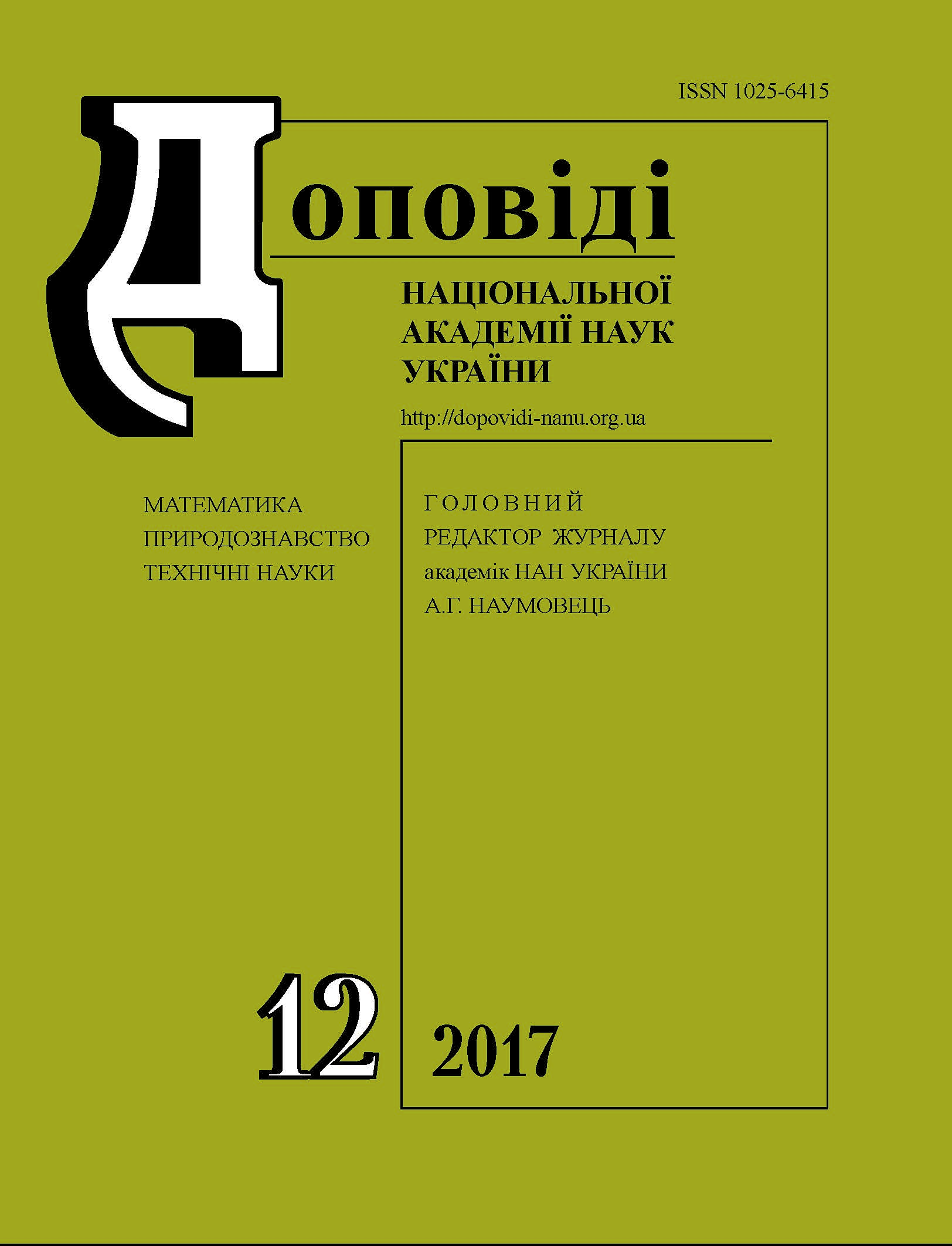Characteristic of KEY-like bacteriophages of Erwinia amylovora
DOI:
https://doi.org/10.15407/dopovidi2017.12.097Keywords:
electron microscopy, Erwinia amylovora, KEY-like bacteriophages, low-pressure liquid chromatography, phage population heterogeneity, restriction analysisAbstract
The study of the heterogeneity of phage isolates obtained from twigs and leaves of pear affected with Erwinia amylovora is conducted. It is established that the isolate contains a two-component population of KEY-like phage particles, which differ in affinity for DEAE-cellulose. Phages of both subpopulations are represented by virions of B1 morphotype (Siphoviridae family) with regular icosahedral capsids with a diameter of about 77 nm and a length of the caudal appendages close to 172 nm. These phage particles are similar to those of the prototype KEY phage in morphology and size. According to the restriction analysis data, the genomes of the pure line phages KEY/7 and KEY/25 are similar to each other and have a size of about 72 kb, which is 25-27 % less than the size of the genome of KEY phage. It is assumed that the phages KEY/7 and KEY/25 represent deletion variants of KEY phage.
Downloads
References
Carlson, K. (2005). Appendix: Working with Bacteriophages: Common Techniques and Methodological Approaches. In Kutter E., Sulakvelidze A. (Eds.). Bacteriophages: biology and applications (pp. 428-485). Boca Raton: SRC Press.
Tovkach, F. I., Moroz, S. N., Korol, N. A., Faiduk, Y. V. & Kushkina, A. I. (2013). Polyvalence of bacteriophages isolated from fruit trees, affected by bacterial fire blight. Mikrobiol Zh., 75, No. 2, pp. 80-88 (in Russian).
Tovkach, F. I., Faiduk, Y. V., Korol, N. A., Kushkina, A. I., Moroz, S. N. & Muchnyk, F. V. (2013). Electron microscopy and restriction analysis of bacteriophages isolated from quince and pear with symptoms of fire blight. Mikrobiol Zh., 75, No. 5, pp. 67-75 (in Russian).
Tovkach, F. I., Grizorian, Iu. A., Ruban, V. I., Danileĭchenko, V. V. & Kishko, Ia. G. (1988). Restriction map of permuted DNA of Erwinia carotovora temperate bacteriophage 59. Mol. Gen. Mikrobiol. Virusol., No. 1, pp. 20-24 (in Russian).
Faiduk, Y. V., Boyko, A. A., Muchnyk, F. V. & Tovkach, F. I. (2015). Virion morphology and structural organization of polyvalent bacteriophages TT10-27 and KEY. Mirrobiol Zh., 77, No. 3, pp. 36-46.
Adrianssens, E. M., Ceeyssens, P.-J., Dunon, V., Ackermann, H.-W., Van Vaerenbergh, J., Maes, M., De Proft, M. & Lavigne, R. (2011). Bacteriophages LIMElight and LIMEzero of Pantoea agglomerans, Belonging to the "phiKMV-Like Viruses". Appl. Environ. Microbiol., 77, No. 10, pp. 3443-3450. doi: https://doi.org/10.1128/AEM.00128-11
Faidiuk, I. V., Tovkach, F. I. (2014). Exclusion of polyvalent T7-like phages by prophage elements. Mikrobiol. Zh., 76, No. 5, pp. 42-50.
Downloads
Published
How to Cite
Issue
Section
License
Copyright (c) 2024 Reports of the National Academy of Sciences of Ukraine

This work is licensed under a Creative Commons Attribution-NonCommercial 4.0 International License.



